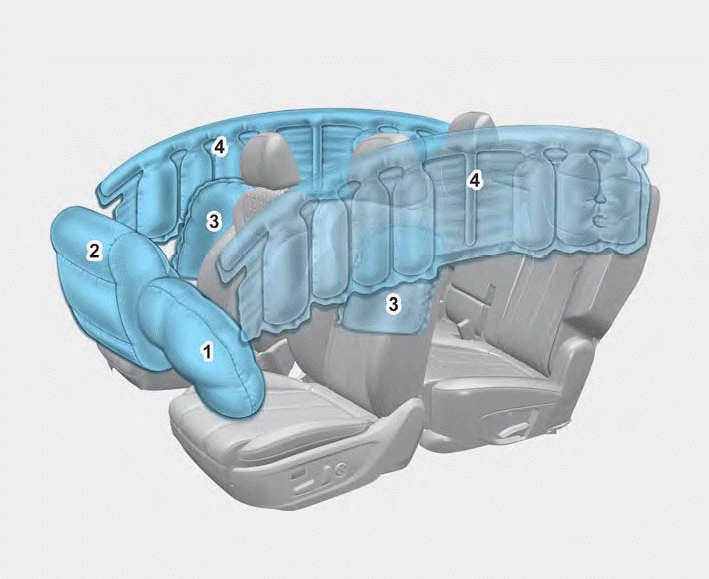Hyundai Santa Fe: Exhaust Emission Control System / Description and operation
Hyundai Santa Fe (TM) 2019-2025 Service Manual / Emission Control System / Exhaust Emission Control System / Description and operation
| Description |
Exhaust emissions (CO, HC, NOx) are controlled by a combination of engine modifications
and the addition of special control components.
Modifications to the combustion chamber, intake manifold, camshaft and ignition
system form the basic control system.
These items have been integrated into a highly effective system which controls
exhaust emissions while maintaining good drivability and fuel economy.
Air/Fuel Mixture Control System [Multiport Fuel Injection (MFI) System]
The MFI system uses signals from the heated oxygen sensor to activate and control
the injector installed in the manifold for each cylinder, thus precisely regulating
the air/fuel mixture ratio and reducing emissions.
This in turn allows the engine to produce exhaust gas of the proper composition
to permit the use of a three way catalyst. The three way catalyst is designed
to convert the three pollutants [hydrocarbons (HC), carbon monoxide (CO), and
oxides of nitrogen (NOx)] into harmless substances. There are two operating
modes in the MFI system.
| 1. |
Open Loop air/fuel ratio is controlled by information pre-programmed
into the ECM.
|
| 2. |
Closed Loop air/fuel ratio is constantly adjusted by the ECM based on
information supplied by the oxygen sensor.
|
 Catalytic Converter. Description and operation
Catalytic Converter. Description and operation
Description
The catalytic converter of the gasoline engine is a three way catalyst. It oxidizes
carbon monoxide and hydrocarbons (HC), and separates oxygen from the oxides
of nitrogen (NOx)...
Categories
- Manuals Home
- 4th Generation Santa Fe Owners Manual
- 4th Generation Santa Fe Service Manual
- Seat cushion extension adjustment (for driver's seat)
- Repair procedures
- Side air bags
- New on site
- Most important about car
Air bag - supplemental restraint system

1. Driver’s front air bag
2. Passenger’s front air bag
3. Side air bag
4. Curtain air bag
The vehicles are equipped with a Supplemental Air Bag System for the driver’s seat and front passenger’s seats.
The front air bags are designed to supplement the three-point seat belts. For these air bags to provide protection, the seat belts must be worn at all times when driving.
Copyright © 2025 www.hsafe4.com

